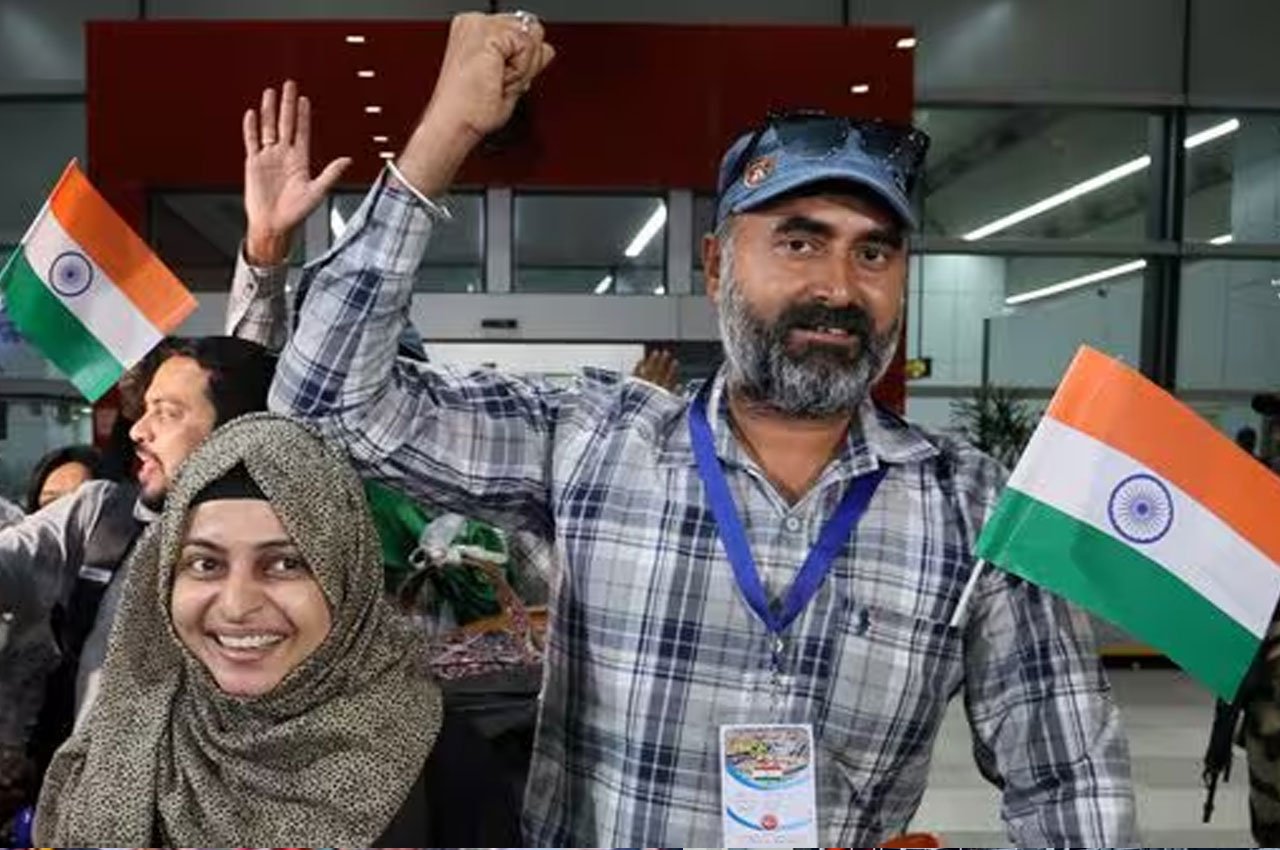Indian students returning from Mashhad, Iran at IGI Airport, New Delhi. Photo Credit: Livemint.com
India’s humanitarian mission in war-affected Iran, dubbed Operation Sindhu, has now safely evacuated more than 500 Indian nationals and extended critical assistance to Nepalese and Sri Lankan citizens amid escalating conflict in the Middle East.
Launched on June 18, Operation Sindhu swiftly repatriated 110 Indian students via Armenia, marking the beginning of an emergency effort to ensure citizen safety as tensions between Iran and Israel intensified. Over the following days, Iran temporarily lifted airspace restrictions, allowing charter planes from Mashhad to New Delhi to evacuate approximately 1,000 persons in three flights—highlighting strong diplomatic coordination.
By the morning of June 21, a total of 517 Indian nationals had returned home aboard a special flight from Ashgabat, Turkmenistan—underscoring India’s relentless evacuation efforts. Many evacuees shared chilling accounts of missiles and drones flying overhead, reflecting the dire circumstances that prompted the rescue.
India Extends Lifeline to Neighbouring Countries
In a first-of-its-kind gesture of regional solidarity, the Indian Embassy in Tehran announced that, following formal requests from Nepal and Sri Lanka, evacuation services would also be extended to their citizens stranded in Iran. The embassy issued emergency helpline numbers and opened a Telegram channel to facilitate communication and coordination for evacuees.
Officials from Kathmandu and Colombo expressed deep gratitude to India. Nepal’s Foreign Minister Arzu Rana Deuba confirmed inclusion of Nepali citizens—some of whom were in detention—while Sri Lankan authorities relayed details via their embassy on accessing assistance through Indian emergency lines.
This humanitarian outreach mirrors India’s legacy of evacuation missions, such as Operation Sukoon during the Lebanon War in 2006, when New Delhi rescued over 2,000 nationals—including Sri Lankans and Nepalese—from conflict zones.
Diplomatic Coordination at Its Best
The swift evacuation was made possible through exceptional diplomatic engagement, notably Iran’s decision to temporarily open its airspace. Charter flights into Mashhad, followed by evacuation via Armenia and Turkmenistan, required seamless collaboration across multiple borders.
MEA spokesperson Randhir Jaiswal highlighted that 24×7 helplines and embassy control rooms were activated in Tehran, Yerevan, and Ashgabat to support citizens continuously. Flights coordinated with local authorities ensured safe passages via land and air corridors, reflecting India’s preparedness and coordination in the face of crisis.
Everyday Heroes: Students Share Harrowing Tales
Upon arrival in Delhi, evacuees recounted witnessing drones and missiles—some falling perilously close to residential areas and university campuses. Their stories evoked powerful narratives of fear, resilience, and relief, and they expressed heartfelt gratitude towards the government for the decidedly swift and dignified rescue.
India’s Established Track Record in Evacuations
Operation Sindhu joins a lineage of Indian missions like Operation Ganga (Ukraine, 2022), Operation Kaveri (Sudan, 2023), Operation Ajay (Israel, 2023), and Operation Devi Shakti (Afghanistan, 2021). These operations underscore India’s commitment to safeguarding its citizens—often under hostile circumstances—through diplomatic engagement and logistical readiness.
What Lies Ahead
With thousands of Indian nationals—mainly students—still in Iran (estimated at around 4,000), further evacuation flights via Turkmenistan and Armenia are underway. The Government of India has emphasized its unwavering commitment to bringing all citizens home safely.
Additionally, its extended assistance to Nepal and Sri Lanka has strengthened New Delhi’s regional humanitarian credentials. Around 16 Nepali citizens, including detainees, and several Sri Lankans are expected to be evacuated in subsequent flights.
Final Word
Operation Sindhu exemplifies India’s rapid humanitarian response to global crises—with coordinated diplomacy, evacuation logistics, and regional support at its heart. The safe return of over 517 Indian nationals, coupled with aid extended to Nepalese and Sri Lankan citizens, reflects India’s role as a reliable regional partner. This unfolding mission reinforces New Delhi’s overarching goal: every citizen brought home, no matter the crisis.




